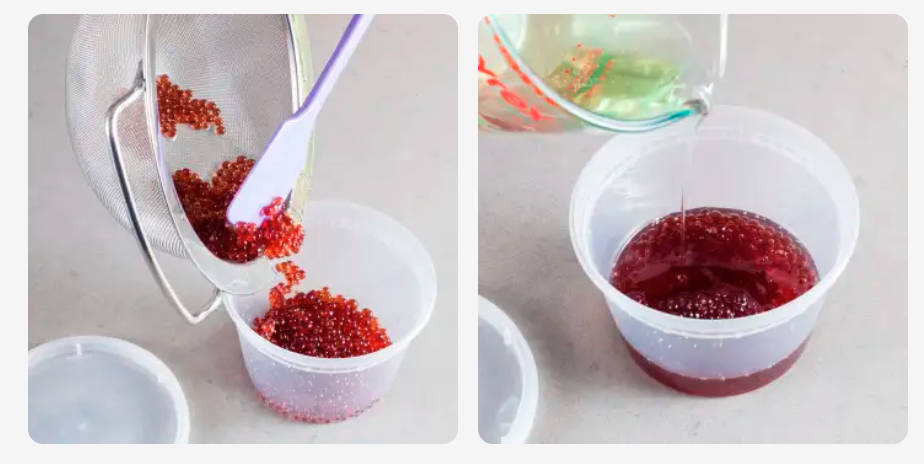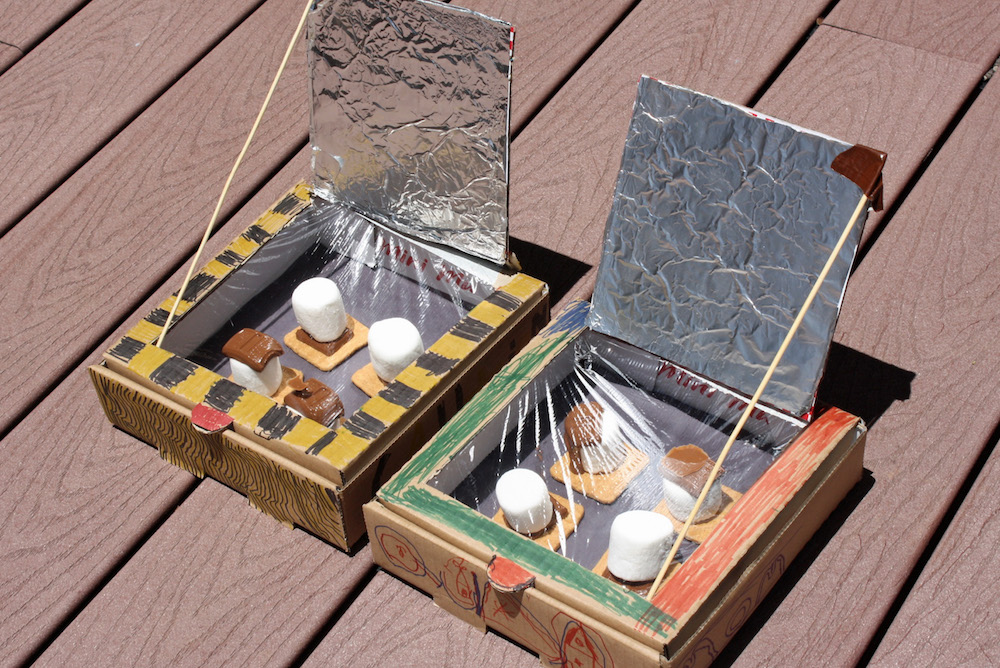






5 Edible Science Experiments for Great Hands-On Learning
Some days you don’t have to decide between doing a science experiment and making a snack—you can do both at the same time! My kids are endlessly fascinated with the kitchen and all the items they find there, like the cheese grater and the knives. So I thought, why not combine uncovering the taboo of certain kitchen items through edible science experiments?
While many videos and books introduce kids to edible science, one of my favorites is Awesome Kitchen Science Experiments for Kids by Dr. Megan Olivia Hall. The tasty concoctions you see below are some of the experiments in her book, encouraging kids to explore science at home. These are all great for letting kids take the lead as they gather the ingredients and get everything set up. Be sure to have kids keep a notebook nearby. Each experiment poses as a question, and kids will want to explore their hypothesis at the beginning so they can see if they guessed correctly at the end.
1. Learn science while analyzing scones and muffins.

Some see distinct differences between scones and muffins and would never confuse them. But what is that difference? In Hall’s scones and muffins experiment, kids discover which one rises more.
Baking soda, a leavening ingredient in both baked goods, causes a bubble chemical reaction. As Hall explains, the first chemical change happens in the wet batter and the second when it is cooked.
Children can help gather the necessary ingredients. An adult may need to help them set the oven temperature, but depending on their age, they may be able to measure and combine the ingredients on their own. Even with the littlest of hands, they can help knead the dough.
Question: Which one rises higher—scones or muffins?
Hypothesis: _________ rises higher because _______________.
For a detailed recipe and instructions, check out the book. Or just use your own recipes. After this experiment, my kids wanted to eat scones or muffins for breakfast, lunch, and dinner.
2. Kids can learn about technology while changing liquid into pearls.

Source: America’s Test Kitchen
With this STEAM edible science experiment, you transform a liquid into a solid. The shape and texture are similar to tapioca pudding or the round, marble-sized balls in bubble tea.
Mix any kind of liquid (juice, chocolate milk, maple syrup) with unflavored gelatin, warm the mixture, and drizzle it into cold oil. This process will create tasty “pearls.” The young cooks can make a few different pearls and have a sibling, parent, or friend taste each one and guess its flavor.
Question: Will they be able to guess the flavor of each pearl?
Hypothesis: Yes, they will guess. Or no, they will not guess. Why?
For a general understanding of the process, check out this video by America’s Test Kitchen with a recipe included. To dive deeper into the chemistry behind this experiment, check out Science Buddies’ steps and methods.
3. Try out your engineering skills while making solar-powered treats.

Source: Desert Chica
While making s’mores may be a favorite campfire activity, these popular solar-powered s’mores capture the sun’s rays to create a gooey deliciousness that won’t require camping out to enjoy. With solar ovens, kids can use sunbeams for cooking almost anything. The real magic is seeing how engineering makes it possible.
Making solar ovens takes almost as much time as cooking s’mores (chocolate, marshmallows, and graham crackers). We loved checking the temperature every five minutes, so investing in a thermometer makes this experiment more fun.
Question: How long does it take for the s’mores to cook?
Hypothesis: It will take five minutes (or one hour, or more).
For step-by-step instructions, try one of these sources:
- Awesome Kitchen Science Experiments for Kids by Dr. Megan Olivia Hall
- Make S’mores with a Solar Oven by Climate Kids (NASA)
- DIY Solar Oven S’mores by Desert Chica
- Solar Oven S’mores by PBS (video with steps)
4. Creating art while studying glaciers.
With global warming a common scientific topic, why not make it into an edible art experiment? With these ice cream glaciers, kids discover how glaciers melt and create a colorful art bonanza that’s delicious.
There are different versions of this experiment, but the basic gist is to spread crumbly sweets (Oreos, wafers, chocolate chips) in a pan and pile gobs of vanilla ice cream on one side. Prop up the side with the ice cream and watch it melt. Be careful: You may eat half of it before it melts, like we did!
Question: How much dirt and how many rocks will the ice cream glacier collect as it moves and melts?
Hypothesis: The glacier will collect __________________.
For step-by-step-instructions check out the following sources:
- Ice Cream Glacier Recipe by the National Park Service
- Build a Glacier Out of Ice cream by Lindblad Expeditions–National Geographic (shown above)
5. Use popcorn for a math lesson.

Source: Our Journey Westward
This is the most straightforward experiment and requires the least amount of prep. Popcorn is a perfect light and crunchy snack anytime of the day. Kernels magically transform when heated, making for an easy and fun edible science experiment.
In this popcorn math activity, kids estimate the change in volume or amount of popcorn they will have once popped. They may be amazed at how much popcorn they get from a ¼ cup of corn kernels.
For more information on exact steps, check out the instructions from Our Journey Westward. After determining how much popcorn they popped, kids can make an edible craft, such as a popcorn necklace or popcorn balls. We even loved choosing our favorite popcorn toppings.
Edible science experiments at home make for tasty snacks and STEAM exploration. Hopefully these inspire you to explore, make, and create.




Comments are closed for this article.